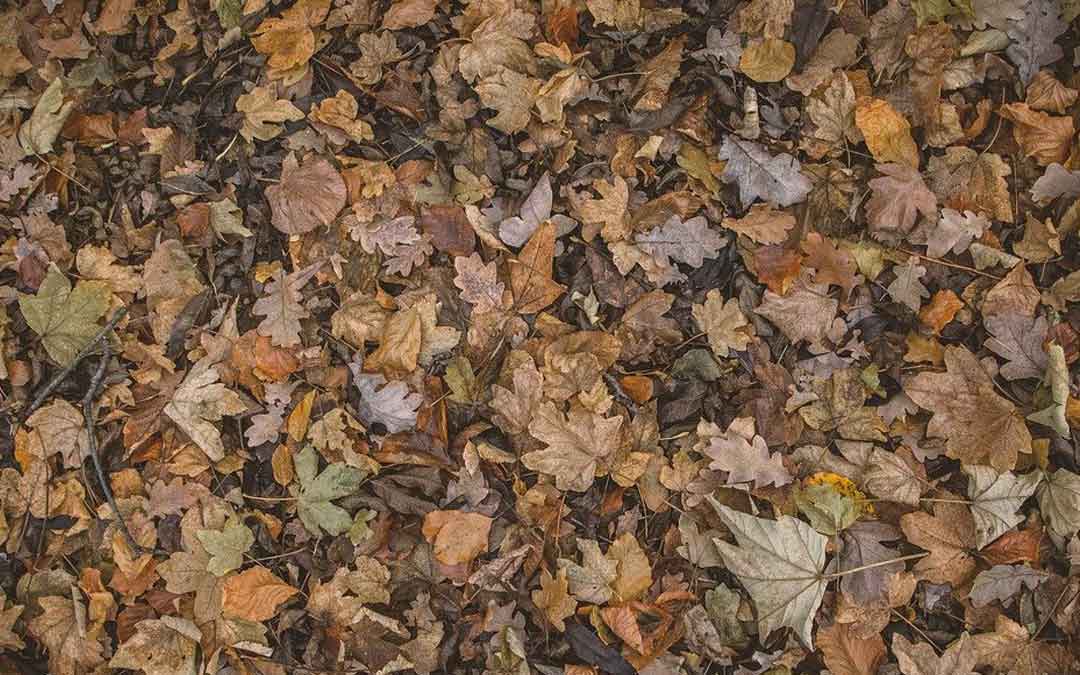Turn autumn leaves into gold!

Recently I saw an unusual site – a Banyule City Council worker was blowing leaves from the gutter onto the nature strip. Usually, it is the other way round, I see people blowing leaves from the nature strip or their driveway into the gutter! This is a poor choice – those leaves block roadside drains, can cause flooding, endanger cyclists especially when wet, release pollutants into waterways as they decay using up oxygen in water relied upon by wildlife living in them, end up in stormwater and ultimately our creeks, rivers, lakes and oceans. There’s much better things to do with leaves – compost them or make leaf mould. Both are garden gold!
Let’s take a look at how valuable leaves are. Deep rooted trees and some deep rooted plants such as comfrey pull trace minerals from deep in the soil and deposit them in their leaves with an efficiency of up to 80%. Leaves contain twice as many minerals as the same weight of manure. This is a free source of nutrients, available when leaves break down into compost or leaf litter.
Composting leaves
The best way of composting leaves is to mow or shred them so that they have lots of edges and are smaller in size. The many leaf edges are then easily accessible to microbes that break down the leaf structure. A rotary mower or a shredder or even a whipper snipper will do the job.
When leaves mat (too thick a layer) this creates a barrier to air circulation and water absorption and consequently slows the composting process or in some cases stops it altogether. When you build your compost heap use layers of shredded leaf no more than 150mm thick.
To begin your compost heap, select a site directly on soil and build layer by layer in one go. Begin with a layer of shredded leaves about 100-150mm thick, then add 50-100mm of fresh grass clippings and repeat until the heap is 1-1.5 m high and has a similar width. The clippings will by the next day have created considerable heat. Add some animal manure either in a layer a couple of millimetres deep if bought commercially, such as blood and bone or dynamic lifter, or 100mm if fresh. Fermented vegetable scraps can be added next (such as the contents of a Bokashi bin). Bokashi mix is full of microbes and a scattering of this alone will speed up composting. Make sure you water each layer as dry material will not compost. Add a ‘heavy’ layer to the surface to prevent any leaves blowing away – this could be soil, hessian bags or chicken wire. Make sure it is something porous so rain can penetrate the heap.
The final step is to turn your heap regularly and as the leaves are light this won’t be heavy work. Leave the heap for a fortnight, then turn every 3 days for rapid composting until you have a rich, black humus which you can either dig into your soil or add as a layer of mulch.
Leaf Mould
Years ago, I stashed leaves in a disused incinerator to get them out of the way. A year later much to my delight and surprise, moist, black, crumbly soil emerged from the bottom outlet. Without an ounce of effort, I had inadvertently made leaf mould or humus. I’ve been a convert ever since.
Leaf mould is so easy to make. Rake up deciduous leaves which fall in autumn and mow them into small pieces (as above for compost) but even if piled whole into a container such as a spare compost bin or simply piled up in a corner, they will break down as long as they get moisture and oxygen. The very best container is a wire cage (4 corner stakes surrounded by chicken wire). As you pile leaves into your container, water every time the layer reaches about 100mm thickness – you might even throw in a layer of soil a couple of millimetres deep now and again. Don’t put the lid back on the compost bin (or other container you might be using). Leave the pile exposed to the elements so that the heap will receive rainfall. You may even want to run the hose into the heap occasionally to ensure moisture levels are adequate. Using a wire cage allows air circulation, stops the leaves blowing away and exposes the heap to rainfall.
Not all leaves are suitable as some release chemicals that inhibit plant growth. These include eucalyptus, camphor and cherry laurels, cypress and walnut.
The advantage of leaf litter is that it is very little work. The disadvantage is that because the leaves break down primarily through fungal activity, it will take about a year or more to break down into humus, but the result will be worth the wait. The humus can be dug into garden beds or added as a mulch. It will provide nutrients, retain moisture and provide a home for microscopic bacteria and fungi that are of great benefit to your garden.
Well done to the council worker who did the right thing! Let’s join him in protecting our waterways and putting ‘gold’ into our gardens.
Written by Robin Gale-Baker
